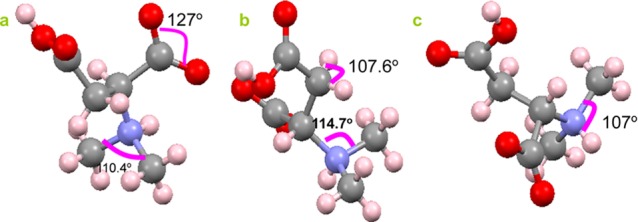Changing functionalities of materials using simple methods is an active area of research, as it is “green” and lowers the developing cost of new products for the enterprises. A new small molecule racemic N,N-dimethyl aspartic acid has been prepared.
Its structure is determined by single–crystal X-ray diffraction. It is characterized by FTIR, XPS, 1H NMR, and mass spectroscopy. Its near-infrared luminescence can be enhanced by the combination of metal ions, including Dy3+, Gd3+, Nd3+, Er3+, Sr3+, Y3+, Zn2+, Zr4+, Ho3+, Yb3+, La3+, Pr6+/Pr3+, and Sm3+ ions.
An optical chemistry mechanism upon interaction between the sensitizer and activator is proposed. Furthermore, the association of Ca2+, Sr2+, or Zr4+ ions to the molecule enhanced its photodegradation for dyes under white-light irradiation.
Specifically, rhodamine 6G can be degraded by the Ca2+-modified molecule; rhodamine B, rhodamine 6G, and fluorescein sodium salt can be degraded by the Sr2+– or Zr4+-modified molecule. This surprising development opens a way in simultaneously increasing NIR luminescence and the ability of dye photodegradation for the investigated molecule.

Absolute structure of the chiral pyrrolidine derivative (2S)-methyl (Z)-5-(2-tert-butoxy-1-cyano-2-oxoethylidene)pyrrolidine-2-carboxylate, a compound with low resonant scattering.
The enantiopure monopyrrolidine derivative (2S)-methyl (Z)-5-(2-tert-butoxy-1-cyano-2-oxoethylidene)pyrrolidine-2-carboxylate, C13H18N2O4, (1), represents a potential ligand and an attractive intermediate for the synthesis of chiral metal complexes. At the molecular level, the compound features an intramolecular N-H…O hydrogen bond; neighbouring molecules interact via N-H…N contacts to form chains along [100].
Due to its elemental composition, resonant scattering of the target compound is entirely insignificant for diffraction experiments with Mo Kα and small even for Cu Kα radiation. A preliminary study with the harder radiation type confirmed the chiral space group and the suitability of the single crystal chosen; as expected, the results concerning the absolute structure remained completely inconclusive. A second data collection with the longer wavelength gave satisfactory quality indicators for the correct handedness of the molecule, albeit with high standard uncertainties.
The absolute configuration has been assessed independently: CD spectra for both enantiomers of the target molecule were calculated and the spectrum for the S-configured stereoisomer was in agreement with the experiment. The Cotton effect of (1) may be ascribed to π-π* transitions from HOMO to LUMO and from HOMO to LUMO+1. As both independent techniques agree with respect to the handedness of the target molecule, the absolute structure may be assigned with a high degree of confidence.
